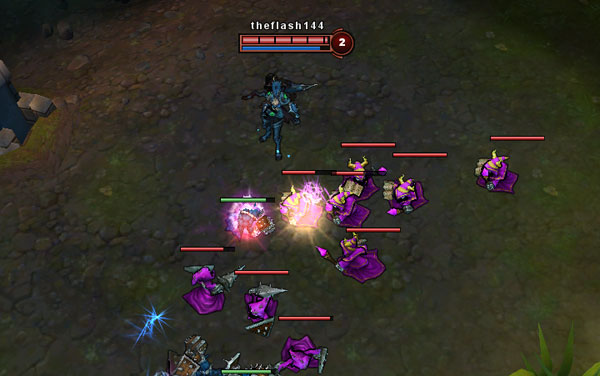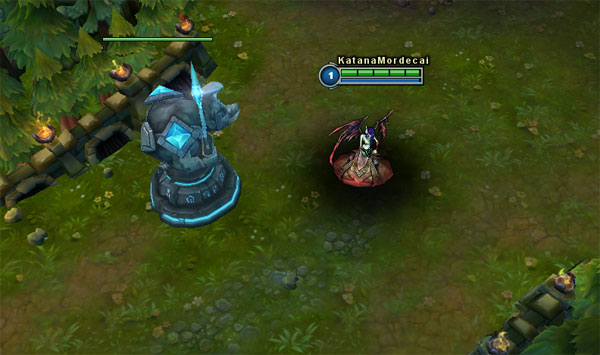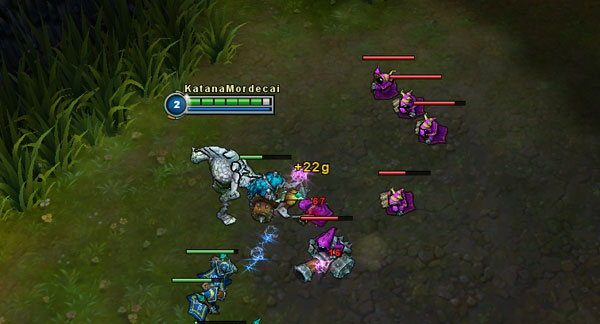
Building Better Teams in League of Legends
A Beginner’s Guide to Team Composition in League of Legends
For a beginner in League of Legends, the constant influx of tips, guides, and advice from other players can be extremely overwhelming. Like other games of its class, there are many different subtleties and aspects which may not become immediately apparent. Although there are countless factors that can determine whether your team wins or loses, a simple place to start improving your game is before the match begins, in champion select.
After playing a few games and reading beginner guides, you have probably come to understand the current popular team composition of attack damage carry and support in the bottom lane, ability power carry in the middle lane, jungler, and bruiser top lane. You may not own very many champions yet, but through the ones you do own coupled with the free week bundle, you have roughly seen which champions work well in which places. If you are looking for how to select a champion for a specific role, read the corresponding category below, but to gain the best understanding of how the parts of a team work together, I encourage you to read the summary for each position.
Remember that one (and only one) of each champion class below is recommended to make your team successful. Once you master this basic core lineup, you will encounter unconventional alternatives such as an AD assassin in the middle lane, switching the positions of top and bottom lane, and even running two junglers. These offbeat strategies can be successful in some cases and disastrous in others, which is why it is safest and best for your game knowledge to stick with the most commonly-used approach until you are very comfortable.
AD Carry (Bottom Lane)
Because an AD carry usually prioritizes gaining gold and experience through minion or champion kills, it is often best to decide which of these two routes you would like to take before choosing your character. Certain carries lend themselves very well to high early game damage, making champion kills much easier to secure, while others play phenomenally late game if they can farm enough creeps. Some great examples of early game kill champions are Miss Fortune and Varus. Champions who benefit well into late game with farm are Ashe, Vayne, and Tristana. Playing these champions will give you a much better idea of what style works best for you with specific champions.
- Make sure you read through the supporting role, as your support will become your lifeline for the first portion of the game. Tell them whether you want to play aggressively, or if you want to passively farm with protection. This will impact how they pick their champion, and how effective your lane is.
- Consider the other champions that have been picked so far. If you don’t have a lot of highly defensive champions in the lineup, it’s usually a good idea to pick a fast carry, or one with built in escapes. Champions like Ezreal with Arcane Shift or Tristana with Rocket Jump have an easier time escaping enemies without teammates who can defend them well. If you do have a strong tank line, long range champions with less mobility could supply your team with extra needed damage. The classic example of this is Kog’Maw, who has some of the longest range poke and harass in the game.

Support (Bottom Lane)
- Supports should almost never choose their champion before the AD carry, because the role revolves around making them as successful as possible. While some supports can do well with most any carry, there are certainly pairings that are stronger than others. As mentioned above, carries usually tend toward aggression or passivity, and this has the biggest impact on how you make your selection. Some great aggressive supports are Blitzcrank (Rocket Grab, Power Fist), Taric (Dazzle), and Leona (Shield of Daybreak). These are just three examples that have great disables, allowing your carry to get the kills they need to do well through the mid and late game. Passive supports typically do not require the same crowd control abilities, but add more to the lane with heals, mana replenishes, and shields. Great examples are Janna (Eye of the Storm), Soraka (Astral Blessing, Infuse, Wish), and Sona (Aria of Perseverance).
Jungler (No Lane)
- Above all else, the jungler must be able to kill the neutral monsters in the jungle quickly and efficiently. Many times, junglers will have attack damage or speed buffs, area of effect skills, and fast clearing times. Because the experience normally gained from laning is supplemented with jungle creeps, a jungler must be able to keep pace with the other nine champions as best as they can. While Lee Sin, Olaf, and Renekton have some of the best early clear times, they are not necessarily the strongest picks in the jungle. The second most important determining factor is the champion’s ability to roam into lanes to kill enemies. Any crowd control or gap-closing spells make this much easier to do. Other jungle picks such as Udyr, Nocturne, and Malphite bring the crowd control to the table.
- Some junglers prefer to farm into late game, much like some AD carries. While this can result in a very strong individual champion, it is not helpful to losing lanes. Swinging the advantage to your AP carry by killing their opponent, for example, can often be enough to snowball them into a very successful game.
- This being said, the balance between being able to clear and being able to have a strong presence in lanes is important.
- One last point speaks to the synergy of the team. When trying to fill in gaps your team may have, make sure to look at how many high-defense tanks are in your lineup. If you find that you have more fragile champions in the top and middle lanes (Examples include Akali, Zyra, and Ziggs just to name a few), you may wish to consider picking a good initiator for your team to get behind. Great picks in these situations are Udyr, Lee Sin, Malphite, and Maokai.

AP Carry (Middle Lane)
- As one of the two solo lanes, AP mid is not heavily reliant on the team through the early and mid game. The most important exception to note is that the mid player and jungler must work together to try to win lane advantage during ganks. A fairly simple way of looking at the teamwork is that at least one of the two champions should have fairly strong crowd control.
- With a jungler like Shyvana, who has no innate cc or gap closer until level six, having a bind or snare on the AP champion can greatly help the success of ganks. Some strong picks with reliable cc are Ryze, Morgana, Zyra, Lux, and Swain.
- With a jungler like Lee Sin, Udyr, or Malphite, a higher burst (large amounts of damage very quickly) carry could help to follow up on the cc very well. Good examples for this situation are LeBlanc and Akali.
- Aside from the above consideration, AP carries are fairly free to choose champions they are comfortable with. As a result, for beginners, focusing in on just a few champions can help you to develop your skills more.

Bruiser (Top Lane)
- As the second solo lane, top lane champions enjoy the same freedom that AP casters do in choosing their champions.
- Try to compensate for your jungler's cc the same way as you would in mid lane. If you have a jungler with weak or no cc, try to pick a champion that does have some. If they do, you may wish to pick a more damage-heavy option.
- Top lane champions that tend to succeed are usually fairly tanky with innate sustain. Any heals, life steal, or mana and life regeneration are huge advantages that can help you to stay in lane longer and farm more effectively.
- As with the jungler, top lanes can fill a defensive role, or a more burst oriented position. With tanky teammates, assassins like Diana and Akali can help to back up your front line with the damage you need to be successful. On the other side of the coin, supporting your offensive champions with characters like Malphite, Maokai, and Olaf can have a similar effect.
You have probably tried out at least a few of these roles already, and have an idea of what you are most comfortable playing. Now that you have reached some sort of comfort zone, I have some terrible news for you: you cannot play the same champion or even the same role every game. Sooner or later, someone else is going to instantly lock in an AD carry, and you’ll have to sacrifice your pride or your team's chances of winning to accommodate. This being said, it is beneficial to learn as many of the roles as you can before you start playing seriously.
The most important step to creating a good team composition is the willingness to accept at least a few of the five available positions. Doing this opens up the ability to work around the champions that have already been picked, as well as cooperate with the players who still have not chosen to optimize strengths. Regardless of how hard you try, you will probably be better at some roles than others, and that’s fine, but keep in mind that the same is true for everyone else. There is nothing wrong with asking for AD carry if that is your best position, but be prepared to branch out because of necessity. If no one is picking champions, then take initiative and allow the team to build around your pick.
As you learn more about the game and develop your abilities, you will be able to make better decisions based on each game’s specific situation. Certain combinations will work better than others, as will different strategies, and the ability to transcend guides and make your own intuitive calls is a large step in becoming a successful player.
Ambrielle 'KatanaMordecai' Army